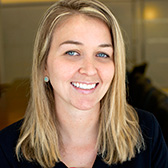Auto logout in seconds.
Continue LogoutEditor's note: This popular story from the Daily Briefing's archives was republished on Oct. 9, 2018.

Deirdre Saulet, Practice Manager, Oncology Roundtable
In 2015, we interviewed more than 600 cancer patients to learn about their experiences: What did they value most in care? What did they find most frustrating? And how could providers serve them better?
When we crunched the data, we discovered that patients fell into five distinct patient types—each with their own unique set of values and preferences. The resulting research and our "Five Types of Cancer Patients" infographic, which outlined how cancer centers can best attract and retain each type of patient, rapidly became one of our most-downloaded resources of all time
But oncology changes, and so too does the way patients interact with their caregivers. Here's what each of the "five types" of patients cares about most today—and the successful strategies that cancer programs have used to keep up with the times.
Type #1: The Researcher

Who they are: This patient cares most about selecting a provider with top-notch reviews and the program's quality performance data and rankings.
How they've changed: In our 2015 interviews, 38% of cancer patients told us they looked at online provider reviews when deciding where to seek care—and the number and influence of these websites has only increased since then. While online reviews and forums are a valuable source of patient feedback, they can also pose a risk to an organization's online reputation, since providers have little control over what patients post.
Your solution: To compete with these review sites, some health systems are publicly sharing their own patient experience data.
University of Utah Health Care was among the first to do so after a physician wondered why he received such positive feedback from internal surveys but such negative comments on external ratings sites. Utah leaders realized the hospital had vast amounts of patient feedback, and they decided to capitalize on that existing data collection to develop its own patient ratings for each physician.
To ease physician concerns, hospital leaders spent six months collecting background information to justify the strategy. Then, they created mock profiles for each physician to demonstrate how much better their internal information was compared with reviews on external sites.
In the year after Utah went live with its updated website, it documented a 128% increase in traffic to its website. Providers also began focusing more on cultivating a positive patient experience: Across three years, Utah saw a sharp increase in the number of physicians scoring at the top of national survey rankings.
To learn more about how to attract today's self-guided patients, read our guide to online cancer program marketing.
Type #2: The Traditionalist

Who they are: This patient places the greatest emphasis on their primary doctor's recommendation when choosing a cancer center.
How they've changed: Even though "traditionalists" have access to more publicly available information than ever before when choosing a cancer center, these patients are still deferring to their physicians in choosing where to go for care. But that doesn't mean there's no opportunity for cancer centers to improve here: Many would benefit from reinvigorating their approach to driving physician referrals.
Your solution: To attract "traditionalists," organizations must continue investing in outreach to referring physicians—but they must do so smartly.
At Fox Chase Cancer Center, leaders developed the "Care Connect Program" to strengthen their relationship with community physicians. Participating physician practices attend educational sessions, offered in-person and virtually, that focus on a range of cancer-related topics, including lung cancer screening, geriatric oncology, and survivorship.
The Care Connect team also travels to primary care offices to offer "lunch and learn" sessions to staff. These sessions not only strengthen their connection with the practice, but also improve specialty clinical knowledge: Fox Chase found a 23% increase in correct responses from office staff on colorectal screening guidelines following the sessions. In addition, their marketing team developed robust branding materials for participating practices, such as framed certificates of membership and a dedicated website listing all participants.
Both the cancer center and community physicians have reported benefits. PCPs feel more confident sending their patients to Fox Chase, while Fox Chase gives information about participating providers to patients who lack a PCP. Patients can make an appointment with a participating PCP within 16 days—five days faster than the regional average—which both improves the timeliness of patient care and leads to higher patient volumes for participating practices.
To learn other ways to secure referrals, download our study on elevating your oncology referral strategy.
Type #3: The Cost-Conscious

What we found: This patient prioritizes their cost of care, including whether the cancer center is in-network for their insurance.
How they've changed: As cancer treatment costs rise and patients take on more responsibility for those costs, a growing number of patients are prioritizing centers that accept their insurance and have low out-of-pocket costs. These patients are also carefully scrutinizing the services they receive.
Patients aren't the only ones feeling the financial burden: In 2015, direct and indirect costs to employers for cancer care totaled $264 billion. Yet many employers don't fully understand these costs or what services are covered for their employees.
Your solution: To help reduce overall costs and attract cost-conscious patients, cancer centers need to help employers and their benefit design managers to understand their current gaps in coverage.
Moffitt Cancer Center, for instance, discovered a significant need for improved education and partnership among local employers regarding cancer care. The center hosted an employer forum where representatives from 30 local companies learned about the patient experience and the importance of providing specific services, such as screening and genetic testing.
Immediately following the forum, seven employers reached out to Moffitt to express interest in partnering more closely. As a result, Moffitt is currently developing an employer partnership product through which employers can purchase additional services from Moffitt or formalize them as a preferred center or center of excellence.
To discover more, download our four-step action plan to developing employer partnerships.
Type #4: The Networker

Who they are: This patient mostly values recommendations from their family or friends.
How they've changed: As the world grows increasingly interconnected and new platforms make it even easier for people to stay in touch, it is even more likely that patients will reach out to friends or family to ask about specific providers, programs, services, and overall experience—and what they hear will likely impact where they go for their care.
Your solution: To attract "networkers," cancer programs need to make sure they're providing a best-in-class patient experience. A prime opportunity for most programs is to enhance urgent symptom support to keep patients out of the ED—an expensive and undesirable site for patients.
At Anne Arundel, leaders realized that oncologists were at capacity and so were unable to respond to nurses’ and patients' questions around symptom management. As a result, many patients ended up in the ED after their symptoms worsened, or simply because they didn't know that the symptoms they were experiencing were normal.
In response, program leaders dedicated a nurse practitioner within the clinic to manage patients with urgent symptoms. To make the most of her time, they created standard protocols of care, clear scheduling processes and referral criteria, and education to patients and caregivers. Within eight months of creating the position, they saw a 35% decrease in ED visits per month and a 13% increase in patient satisfaction.
To fight avoidable ED and hospital utilization at your organization, learn our three practices to keep your cancer patients out of the ED.
Download the Study
Type #5: The Switcher
![]()
Who they are: This patient highly values their experience of care—and they are willing to switch to another center if unsatisfied.
How they've changed: In our 2015 survey, about 8% of survey respondents were "switchers"—meaning they left their cancer provider because they were not satisfied. These patients were overwhelmingly young, female, and had breast cancer. Many indicated that they changed providers because they wanted to play a more active role in their health care decisions—and as patient engagement and expectations for care increase, so too does the likelihood patients will leave a provider if they are dissatisfied.
The solution: There are many ways to meet the needs of "switchers," but a promising opportunity is to develop a comprehensive second opinion clinic. Nearly half of cancer patients obtain a second opinion, but after doing so, they typically return to their original oncologist for care. By offering a patient-centered second opinion clinic, you can provide a best-in-class experience to patients who were originally diagnosed elsewhere so that, when appropriate, you can retain those patients for treatment.
For example, OhioHealth developed a second-opinion clinic accessible to breast cancer patients at any point in their care. Patients who contact the clinic first speak with a nurse coordinator, who collects their information, coordinates referrals, and appoints a lead physician to manage the case. After an initial assessment, the lead physician consults with a broader care team—which may include other cancer specialists as well as support staff, such as a genetic counselor or fertility expert—to develop recommendations and share them with the patient.
Patients report high satisfaction with this streamlined experience, and thus many end up staying at OhioHealth for their care. In fact, over a 15-month period, leaders documented that more than 50% of all patients referred from outside the system ended up becoming new patients at the cancer center.
To learn how to create a leading breast cancer center of excellence, watch our on-demand webconference.
Join our popular webconference series: 'Cancer Care Essentials'
Back by popular demand, our four-part webconference series will help you understand today's cancer patients—what they expect from you, how their market is evolving, and how you can serve both survivors and patients facing the end of their lives.
Join us for the series, or just choose the areas where you need a refresher:
- Today at 1 pm ET | Understand oncology market trends
- Thursday, Oct. 18 | Meet the needs of 18 million (and counting) cancer survivors
- Wednesday, Oct. 24 | Improve end-of-life care for cancer patients
Don't miss out on the latest Advisory Board insights
Create your free account to access 1 resource, including the latest research and webinars.
Want access without creating an account?
You have 1 free members-only resource remaining this month.
1 free members-only resources remaining
1 free members-only resources remaining
You've reached your limit of free insights
Become a member to access all of Advisory Board's resources, events, and experts
Never miss out on the latest innovative health care content tailored to you.
Benefits include:
You've reached your limit of free insights
Become a member to access all of Advisory Board's resources, events, and experts
Never miss out on the latest innovative health care content tailored to you.
Benefits include:
This content is available through your Curated Research partnership with Advisory Board. Click on ‘view this resource’ to read the full piece
Email ask@advisory.com to learn more
Click on ‘Become a Member’ to learn about the benefits of a Full-Access partnership with Advisory Board
Never miss out on the latest innovative health care content tailored to you.
Benefits Include:
This is for members only. Learn more.
Click on ‘Become a Member’ to learn about the benefits of a Full-Access partnership with Advisory Board
Never miss out on the latest innovative health care content tailored to you.
